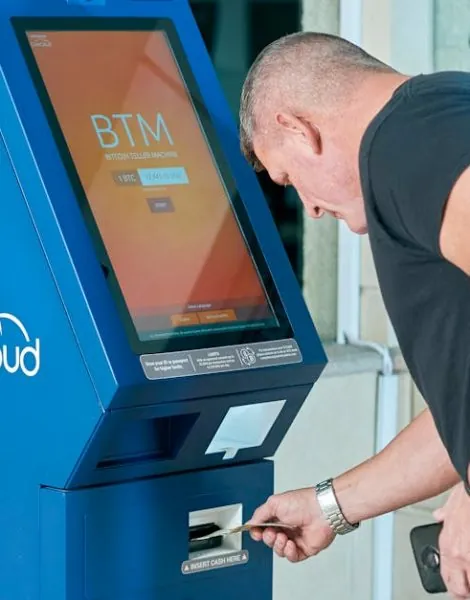In a world where trust often feels as elusive as a unicorn, the blockchain trust layer swoops in like a superhero. This innovative technology promises to transform how we verify transactions and build relationships in the digital space. Imagine a world where you can send money, sign contracts, or even buy a house without sweating over whether the other party will ghost you—sounds dreamy, right?
The blockchain trust layer isn’t just a buzzword; it’s the secret sauce that takes the guesswork out of online interactions. By providing a transparent and secure framework, it empowers users to engage confidently, knowing their data and assets are protected. So, buckle up as we dive into this fascinating realm where technology meets trust, and discover how it’s reshaping the future of transactions.
Table of Contents
ToggleOverview of Blockchain Trust Layer
The blockchain trust layer transforms how transactions and relationships are verified online. It eliminates trust concerns, providing a secure environment for essential digital activities.
Definition and Importance
A blockchain trust layer refers to the technology framework that enhances transaction verification while ensuring data integrity. This layer establishes a decentralized trust model, enabling participants to interact without relying on intermediaries. In online transactions, this model reduces fraud and increases efficiency. Users feel secure knowing their data is protected, which fosters a more reliable digital economy. A trust layer supports various applications, from cryptocurrency transactions to smart contracts and beyond, facilitating seamless interactions in a growing digital landscape.
Key Components
Key components of a blockchain trust layer include decentralization, transparency, and cryptographic security. Decentralization distributes control across a network, eliminating single points of failure. This structure enhances resilience and security. Transparency allows users to access transaction histories, fostering accountability among participants. Cryptographic security protects data through advanced encryption techniques, ensuring privacy and integrity. Together, these components create a robust system that users can trust for secure transactions, ultimately reshaping how value is exchanged in the digital world.
How Blockchain Trust Layer Works
The blockchain trust layer operates through innovative mechanisms that enhance transaction integrity. This technology framework relies on two key elements: consensus mechanisms and cryptographic techniques.
Consensus Mechanisms
Consensus mechanisms provide a way for network participants to agree on the validity of transactions. Various methods exist, including Proof of Work and Proof of Stake, each offering distinct advantages. Proof of Work ensures security through complex computations, while Proof of Stake promotes energy efficiency by relying on validators holding cryptocurrency. These mechanisms help maintain the integrity of the blockchain by preventing double-spending and ensuring that all transactions are verified. As a result, consensus mechanisms create a trustworthy environment where participants can engage with confidence.
Cryptographic Techniques
Cryptographic techniques form the backbone of the blockchain trust layer’s security. Public and private keys enable secure transaction signing, ensuring that only authorized users access their assets. Hash functions, on the other hand, maintain data integrity by creating unique identifiers for each block, making alterations easily detectable. Smart contracts utilize cryptography to enforce agreements automatically, eliminating the need for intermediaries. Through these techniques, blockchain ensures that user data remains secure and reduces the risk of fraud, fostering a trustworthy digital ecosystem.
Benefits of Blockchain Trust Layer
The blockchain trust layer significantly enhances transactional interactions by providing security and transparency. Key benefits include improved security and increased transparency in digital transactions.
Enhancing Security
A robust security framework characterizes the blockchain trust layer. This framework utilizes advanced cryptographic techniques to protect sensitive data. Authenticating transactions involves public and private key systems. Network consensus mechanisms prevent unauthorized alterations, ensuring data remains intact. Fraudulent activities, such as double-spending, find little opportunity to thrive. Users gain confidence due to the transparent ledger system which records transaction history securely. As a result, malicious actors face formidable challenges in compromising the blockchain environment.
Improving Transparency
Transparency emerges as a defining feature of the blockchain trust layer. All participants can access a comprehensive transaction history, creating an open environment for scrutiny. This openness strengthens accountability among users as their actions remain traceable. Real-time updates ensure that everyone involved receives information almost instantly. Discrepancies or anomalies can be identified and addressed promptly, fostering trust across interactions. Stakeholders derive reassurance knowing the system’s operations are visible and verifiable, enhancing their overall experience with online transactions.
Challenges of Implementing Blockchain Trust Layer
Implementing a blockchain trust layer poses several significant challenges that stakeholders must address. Technical barriers and regulatory concerns present obstacles to widespread adoption and integration.
Technical Barriers
Technical barriers play a crucial role in hindering effective implementation of the blockchain trust layer. Scalability issues often arise as blockchain networks encounter increased transaction volumes. Transaction speeds may decline, impacting user experience during high-demand periods. Interoperability also presents challenges, as different blockchain networks use unique protocols, making seamless communication difficult. Security vulnerabilities, including potential exploits in smart contracts, raise concerns about data integrity and user safety. Additionally, the complexity of blockchain technology may necessitate a skilled workforce, creating a talent gap that complicates deployment efforts.
Regulatory Concerns
Regulatory concerns significantly influence the implementation of blockchain trust layers. Governments worldwide continue to establish varying regulations that affect blockchain operations. Uncertainty around compliance can deter businesses from adopting this technology. Data privacy laws, such as the General Data Protection Regulation (GDPR), affect how organizations handle user information on the blockchain. Additionally, anti-money laundering (AML) and know-your-customer (KYC) requirements impose stringent conditions that can challenge blockchain’s decentralized nature. Organizations must navigate this complex regulatory landscape to ensure adherence while still reaping the benefits of blockchain technology.
Future of Blockchain Trust Layer
The future of the blockchain trust layer holds immense potential for transforming digital transactions. Innovations continue to emerge, providing even greater opportunities for trustworthy interactions in various sectors.
Emerging Trends
Decentralized finance (DeFi) continues to gain traction, reshaping traditional financial systems. Non-fungible tokens (NFTs) are also growing, revolutionizing ownership and digital content transactions. Institutional investments increasingly flow into blockchain technology, indicating heightened trust and acceptance. Increased use of artificial intelligence in blockchain applications improves security and efficiency. Environmental sustainability concerns are driving the development of energy-efficient consensus mechanisms, promoting greener practices.
Potential Use Cases
Supply chain management benefits significantly from the blockchain trust layer, enhancing traceability and accountability. Healthcare applications utilize this technology for secure patient data management and sharing, ensuring privacy. Real estate transactions become more efficient through smart contracts, reducing the need for intermediaries. Voting systems leverage blockchain’s transparency, fostering trust in electoral processes. Identity verification applications can streamline customer interactions, reducing fraud while enhancing user experience.
The blockchain trust layer stands at the forefront of digital transformation. By fostering a secure and transparent environment for transactions, it addresses long-standing trust issues in online interactions. As organizations begin to harness its potential, the benefits of decentralization and enhanced security will reshape industries and user experiences alike.
While challenges remain in its implementation, the ongoing advancements in technology and regulatory frameworks will likely pave the way for broader adoption. The future of the blockchain trust layer looks promising, with its applications set to revolutionize various sectors and redefine the nature of trust in the digital economy.









